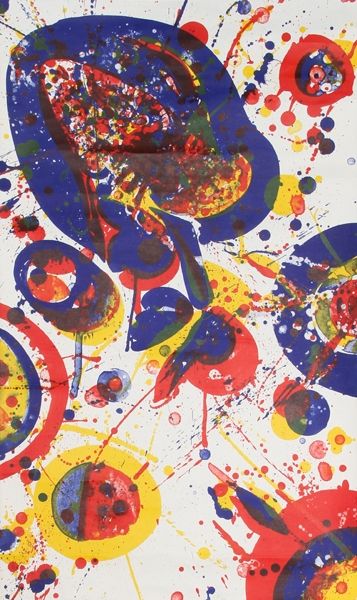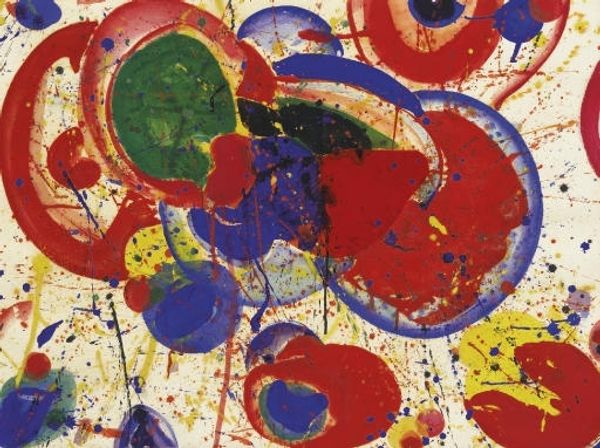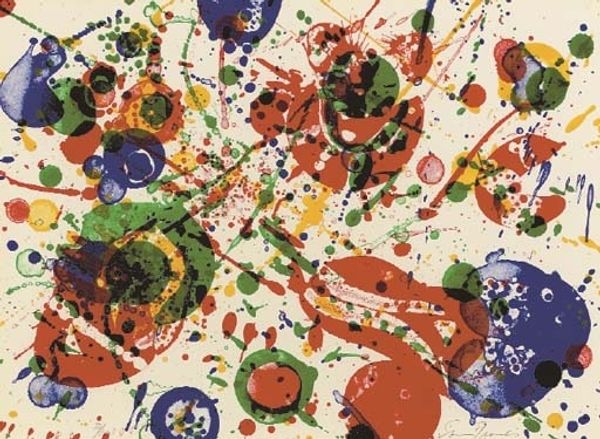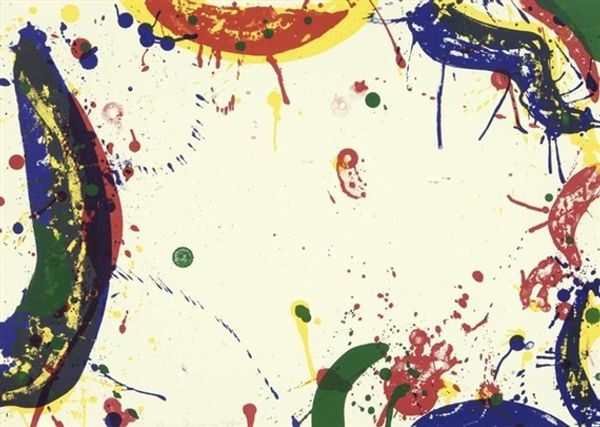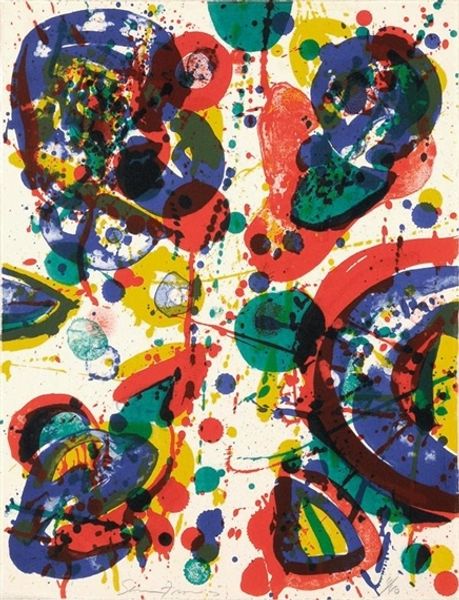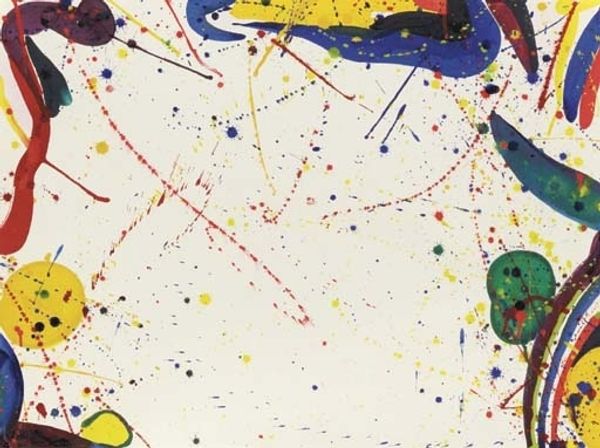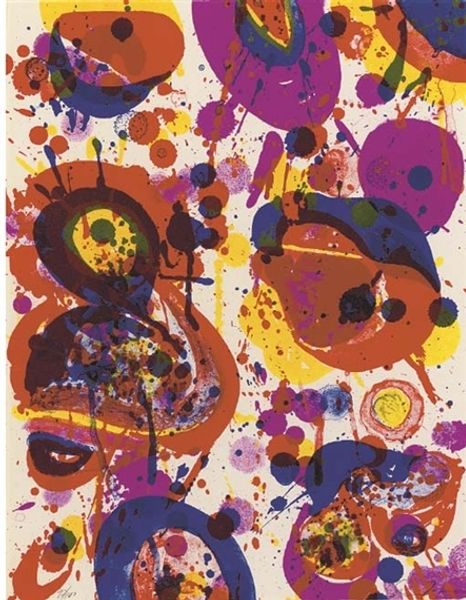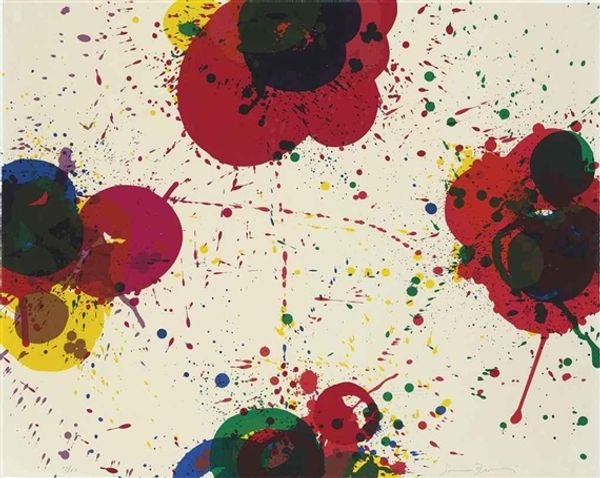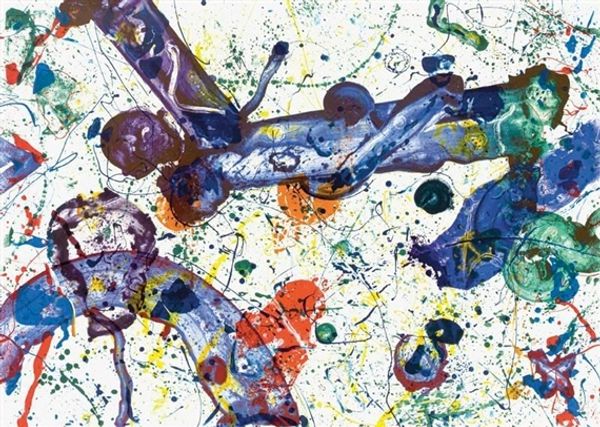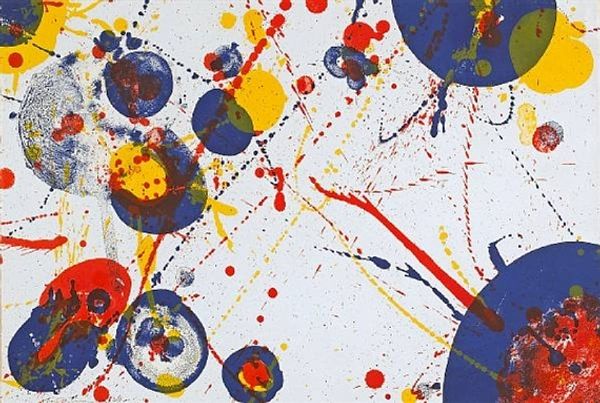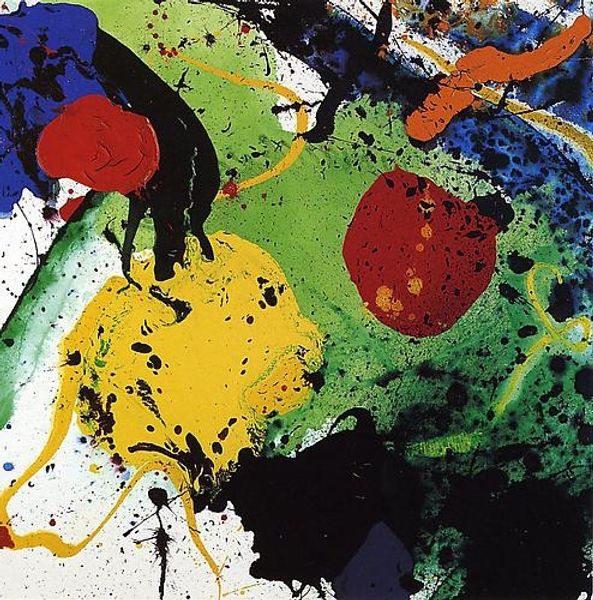
print, acrylic-paint
#
abstract-expressionism
#
abstract expressionism
#
organic
# print
#
acrylic-paint
#
form
#
organic pattern
#
paint stroke
#
line
Copyright: 2012 Sam Francis Foundation, California / Artists Rights Society (ARS), NY
Curator: The piece before us, created in 1963, is titled "Untitled (from Pasadena Box)." It’s an acrylic print by the American artist Sam Francis. Editor: My immediate impression is of organized chaos! The colors are vivid—cobalt blue, rust-orange, lemon-yellow—splayed across the surface in dynamic, organic forms. The composition seems deliberately unbalanced. Curator: Francis emerged during a period dominated by Abstract Expressionism, so its rejection of representational forms makes sense. He situated himself amongst New York artists responding to anxieties of the atomic age by turning to the visceral act of painting itself. Editor: Right, I can certainly see that, with its all-over composition. Notice the interplay of shapes—those amorphous blobs and splatters. It looks like cells seen through a microscope slide, simultaneously contained and expanding outward, almost like an otherworldly form. The contrast in textures – thin drips versus thick impasto-like pools of color – lends a tactile quality. Curator: Consider the significance of calling it the “Pasadena Box”. In 1962, Walter Hopps organized the famous Marcel Duchamp retrospective at the Pasadena Art Museum. Francis may have been interested in making something reproducible and available in a relatively accessible way, perhaps in line with Duchamp's idea that the museum had been bypassed by artists themselves who could create new avenues for distributing artwork and undermining authority. Editor: And that sense of the process itself being on display. It emphasizes the materiality of paint and the action of applying it to a surface—the gesture becomes the subject. It seems more process oriented, a deliberate investigation of color interaction. Curator: Francis also grappled with existential themes after his health problems, which, to some extent, also appear to manifest here. Although a dynamic, it's somehow melancholic and hints at themes of life, death, and regeneration. Editor: Yes, you are so right, I did miss that slightly. Those seemingly random marks aren't random at all when you know the context of production and start associating them with certain universal experiences, of birth and pain. I notice something different. Curator: This deep dive reveals how even seemingly "pure" abstraction has profound cultural and personal connections, shaped by larger historical currents. Editor: It underscores how formal analysis alone isn’t enough to grasp the fullness of the artwork. And seeing art always in relation to its context helps create new understandings.
Comments
No comments
Be the first to comment and join the conversation on the ultimate creative platform.

